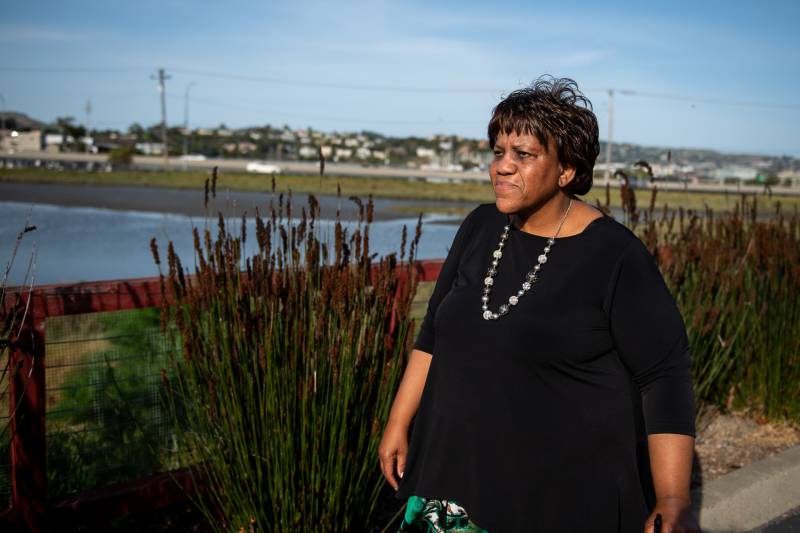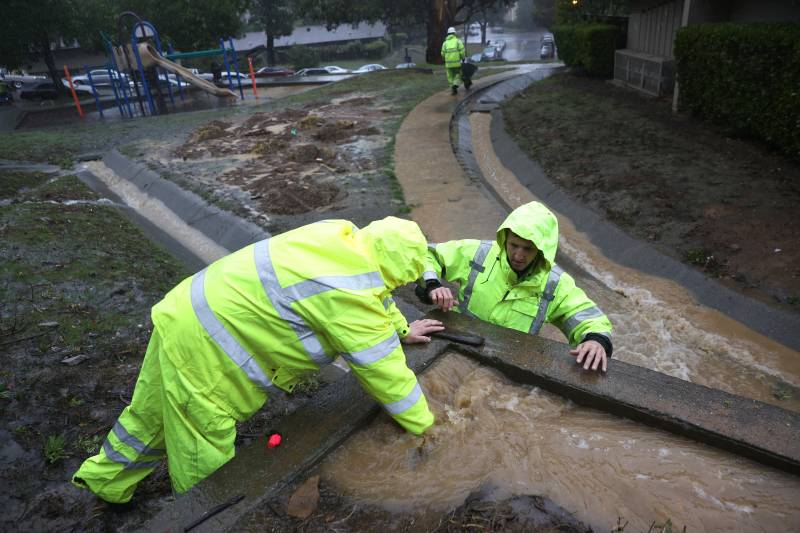Individuals in Marin City have higher asthma rates, shorter life expectancies and big cost burdens when compared to the rest of the state. Add environment change, and citizens here face a double vulnerability, as do lots of communities of color all over the world.
“Marin City has actually flooded for over 80 years,” said resident Terrie Harris-Green, rotating in a black, pleather workplace chair to prop up an inundation map of Marin City on a close-by chair.
The 72-year-old Black female wears a bright red floor-length dress and a cloud-colored cardigan. She’s the founder of the nonprofit Marin City Climate Resilience and Health Justice and has fought for environmental justice for this neighborhood for years. She stated the local government hasn’t adequately invested in this neighborhood and its facilities.
“We’re neglected of so much when it comes to this county, however we’re going to continue to battle,” she said. “We’re at a location in Marin City where we’re stating enough is enough. It comes to race. It comes down to it. It pertains to race.”
Harris-Green and other homeowners are wrestling with authorities they don’t trust for firm over environment plans and flood defenses, promising that Marin City won’t continue to be disregarded. They are calling for reparations to repair the damage caused by years of federal government inactiveness.
 Terrie Harris-Green presents for a picture near a pond in Marin City on April 7, 2022, after a neighborhood conference with California Senator Mike McGuire to go over flooding concerns in the location.( Beth LaBerge/KQED )4 megafloods this century A climatic river parked itself over Marin City last October, turning looping property streets into rivers, overloading Donahue Street, and filling the highway underpass and the only entryway into the city.
Terrie Harris-Green presents for a picture near a pond in Marin City on April 7, 2022, after a neighborhood conference with California Senator Mike McGuire to go over flooding concerns in the location.( Beth LaBerge/KQED )4 megafloods this century A climatic river parked itself over Marin City last October, turning looping property streets into rivers, overloading Donahue Street, and filling the highway underpass and the only entryway into the city.
Chinaka Green and her 14-year-old child were driving home from a high school football game when the storm hit. They sat for hours, stuck behind a line of automobiles, sandwiched in between the highway and San Francisco Bay.
“We were caught,” stated Green, Harris-Green’s 41-year-old daughter.
She abandoned her vehicle on the side of the road in the neighboring city of Sausalito, a ritzy tourist location with quaint houseboats and wineries, and trudged a quarter-mile through knee-deep water. She stated sewage spilled from utility holes, merging with the stormwater and drenching their shoes and clothing.
“We took off whatever, put it in a bag and tossed it away,” she said. Fast floods caused by atmospheric rivers are extremely hazardous. The same year, two people died when their vehicle was submerged in a flooded underpass in Millbrae. The primary underpass into and out of Millbrae regularly floods, like Marin City’s.
This flooding is a precursor of what the Bay Area will experience as environment modification escalates, increasing the danger of a California megaflood. Superstorms sustained by climatic rivers could bring more than 16 inches of rainfall throughout the state in one month and cause disastrous flooding, according to brand-new research from UCLA researchers Xingying Huang and Daniel Swain.
“The problem is we constructed our infrastructure assuming these events were really uncommon,” said Swain. “Now, they are something you ought to be anticipating.”
As many as four megafloods could overload California this century, according to Swain. How bad the megastorms will be for Marin City will depend, in part, on how quick the world minimizes emissions that trigger environment change.
The worst-case scenario for Marin City is a megastorm wailing on the community at the very same time as a king tide, trapping citizens for numerous successive days.
“Our tolerance for making mistakes is getting actually, truly little,” said UC Berkeley’s Hill. “We just don’t have any space for mistake anymore.”
 Employees attempt to divert water into drains as rain puts down on Oct. 24, 2021, in Marin City.(Justin Sullivan/Getty Images)
Employees attempt to divert water into drains as rain puts down on Oct. 24, 2021, in Marin City.(Justin Sullivan/Getty Images)
‘They do not want to see us’In 2014, a storm dropped almost 2 inches of rain on Marin City, a deluge that accompanied a king tide that pushed tides 8 feet greater than typical. Flooding cut off gain access to into the neighborhoods and swamped Highway 101, supporting traffic for miles.
Marin County released a research study of the problem following that storm. Since then, flooding has actually shut down highway traffic entirely and obstructed Marin City’s only egress three more times. During a 2017 flood, homeowners reported that a school bus chauffeur left children (PDF) to “stroll through polluted water to get house.”
During last October’s storm, Lauren Mims and her dad worried that floodwaters would overwhelm their cars and truck on the way to the supermarket. She is among a handful of teens who train with Harris-Green’s environment group.
“We are not actually taken note of since there’s a great deal of African Americans here, and they do not want to see us,” Mims, 14, said.
Harris-Green and others have actually pushed authorities for brand-new flooding infrastructure for years. The last significant drainage enhancement job happened in the mid-1990s when a shopping center was developed next to the freeway in addition to a short-lived floodwall to obstruct increasing water.
Thirty-some years later, the aging drainage system of pipes, a tide gate and culverts don’t “function as originally developed,” according to a 2017 county drainage study (PDF).
“When you speak about sea level increase projections in 2050 with 3 feet– we have that right now,” Harris-Green said.
@kqedofficial Lauren Mims of Marin City’s #poem talks to the climate crisis impacting her community. #climatechange #climateaction #youth 4climate initial noise – kqed



















